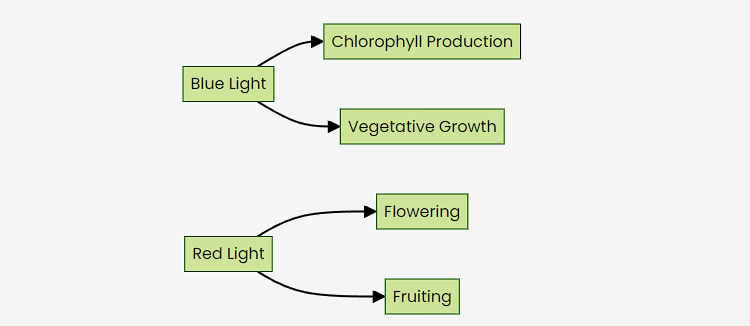In the realm of indoor gardening, the spectrum of LED plant lights plays a crucial role in the growth and development of plants. As we delve into the intricacies of this spectrum, we uncover a fascinating world of light wavelengths and their impact on plant physiology.
Light is composed of various wavelengths, each falling within a specific range on the electromagnetic spectrum. When it comes to plant growth, certain wavelengths are more beneficial than others. The visible light spectrum for plants ranges from approximately 400 to 700 nanometers, encompassing colors from blue to red.

Blue light, with wavelengths ranging from 400 to 500 nanometers, plays a vital role in promoting vegetative growth in plants. It stimulates chlorophyll production, which is essential for photosynthesis and overall plant health.
On the other end of the spectrum, red light between 600 and 700 nanometers is crucial for flowering and fruiting stages. It triggers the production of hormones that regulate flowering, ensuring optimal reproductive growth in plants.
While blue and red light are key players, providing plants with a full spectrum of light that includes all visible wavelengths is ideal for comprehensive growth. Full spectrum LED lights mimic natural sunlight, offering a balanced mix of colors to support all stages of plant development.
PAR refers to the range of light wavelengths (usually between 400-700nm) that plants can use for photosynthesis. When selecting LED grow lights, considering the PAR output is crucial to ensure that plants receive the necessary light energy for healthy growth.
PPFD measures the number of photons within the PAR range that reach a specific area per second. It indicates the light intensity available to plants at a given distance from the light source. Understanding PPFD values helps in determining the light coverage and intensity required for different plant species.
When selecting LED grow lights for indoor plants, considering the light spectrum is paramount. Opt for lights that offer a balanced spectrum with sufficient blue and red light, along with other essential wavelengths. Additionally, assessing the PAR output and PPFD values of the lights can guide you in providing optimal lighting conditions for your plants.

In conclusion, understanding the spectrum of LED plant lights is essential for successful indoor gardening. By harnessing the power of different light wavelengths and providing plants with the right balance of colors, you can create an optimal growing environment that promotes healthy growth and abundant harvests. Choose LED grow lights wisely, considering the spectrum, PAR output, and PPFD values to ensure your plants thrive under artificial lighting conditions.
Luxgrow is developed by photology engineers and more than 13 years R & D engineers team in led lights
As a professional and rich experience grow light designer and manufacturer for indoor greenhouse farms ; Luxgrow really knows offer the exclusive customized layout service is very necessary and cost-efficient.
We offer free exclusive customized layout service for customers , not only in the lighting configuration help,but also help you know the budget